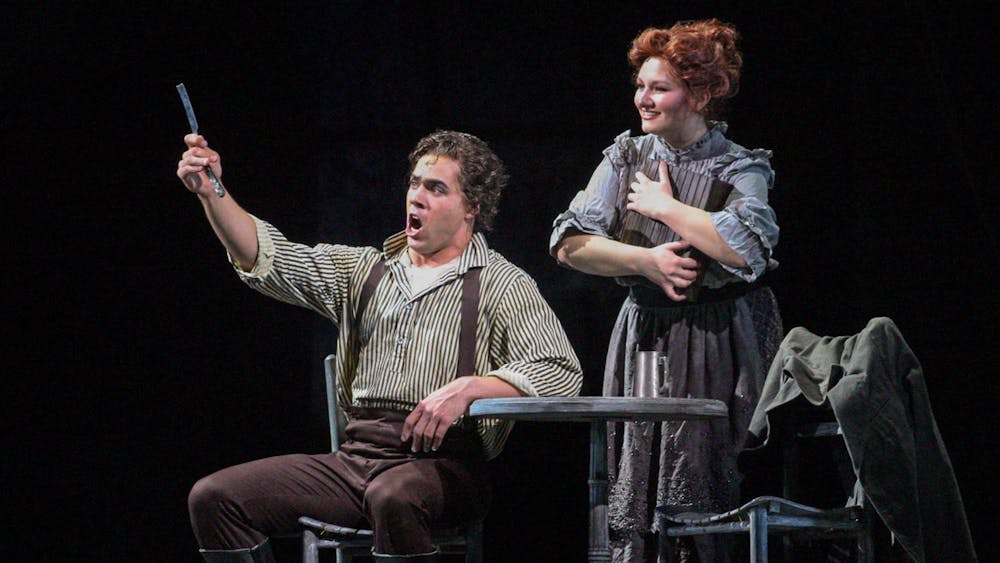SPRINGFIELD, Ill. -- The story began 20 years ago in Kenya with one family's grief. It traveled halfway around the world, passed through Hollywood and came to a museum in the middle of America.\nNow it will end where it began, but this time with the family celebrating a small victory -- the return of a stolen memorial to a dead relative.\nThe Illinois State Museum sent the memorial, known as a "kigango," back to its original owners Wednesday. Kenyan officials say this is the first time a museum has ever returned a stolen African artifact to its rightful owners.\n"I commend them for this bold and unprecedented initiative, the first of its kind indeed," Suleiman Shakombo, Kenya's minister of national heritage, said at the transfer ceremony.\nThe kigango was one of two erected by Kalume Mwakiru to honor his dead brothers. Mwakiru's family had suffered a series of misfortunes -- the death of livestock, bad harvests, illnesses, nightmares -- and he believed honoring his brothers would end the family's problems.\nBut in 1985, two years after the memorials were erected, someone stole them.\nThieves can sell them to Kenyan souvenir shops for perhaps $50, experts say. The shops then sell them to art dealers for several hundred dollars. The dealers can get $5,000 from American collectors.\nThis particular kigango wound up in a California art dealership and was purchased by actor Powers Boothe, who donated it and seven others to Illinois State University, said anthropologist Monica Udvardy, who has traced the memorial's path.\nThe university closed its museum and transferred its collection, including the kigango, to the Illinois State Museum in Springfield in 2001.\nUdvardy and fellow anthropologist Linda Giles say nearly 300 of the memorials -- called "vigango" when talking about more than one -- are owned by American museums. There's generally no way to figure out where they originated or whether they were stolen or somehow obtained legitimately.\nBut Mwakiru's family got lucky.\nUdvardy, while doing research in Kenya, had photographed Mwakiru standing alongside the memorials just before they were stolen. She knew they had been taken and, years later, spotted one during a slide presentation at a conference on African studies.\nWith Udvardy's photo as proof they had once owned the kigango, Mwakiru's family stepped forward to ask the Illinois State Museum to return it.\nThe 4.3-foot-tall kigango is a post with a vaguely human shape, decorated with blue paint and strips of cloth.\nMwakiru, who died in 1987, was terribly upset when the two memorials were stolen, according to a letter the family wrote to the museum earlier this year. After they vanished, the family's fortunes declined. Calves were stillborn. People got sick. Jobs were hard to find.\n"We believe that all these troubles will improve if our vigango are returned to us," the family wrote.\nMuseum director Bonnie Styles said there was no real debate over whether to return the memorial once the rightful owners asked for it. "The decision for us was clear-cut and simple," she said.\nBut another museum sees it differently.\nThe Mwakiru family's other kigango has been traced to the Hampton University Museum in Virginia, which has not agreed to return the artifact. The university did not respond to a message seeking comment Wednesday afternoon.\nShakombo, the minister of national heritage, said he is saddened by Hampton University's position.\n"They keep on telling us they legally acquired it when the family at home is crying that kigango was stolen. Now whom are we going to believe?" he said.\nShakombo said he would like all vigango to be eventually returned to Africa, even if there is no record of the original owners.\nBut Styles, despite her support for returning the Mwakiru family's memorial, said the broader issue is not simple.\nMuseums around the world need foreign artifacts to educate visitors about different cultures, she said. The Illinois State Museum, for instance, has mounted several exhibits of African items during the past decade and is trying to get funding to put the collection on the Internet.\n"It is a very important collection to us in terms of increasing the diversity of our audience and our visitors," Styles said. "But I'm very supportive of working with museums in other countries to review any evidence they might have that a piece was illegally acquired"
Illinois museum returning stolen memorial
Return of African artifact first for museum
Get stories like this in your inbox
Subscribe





